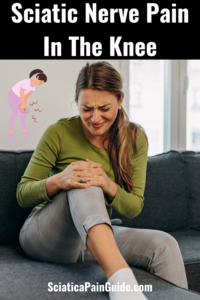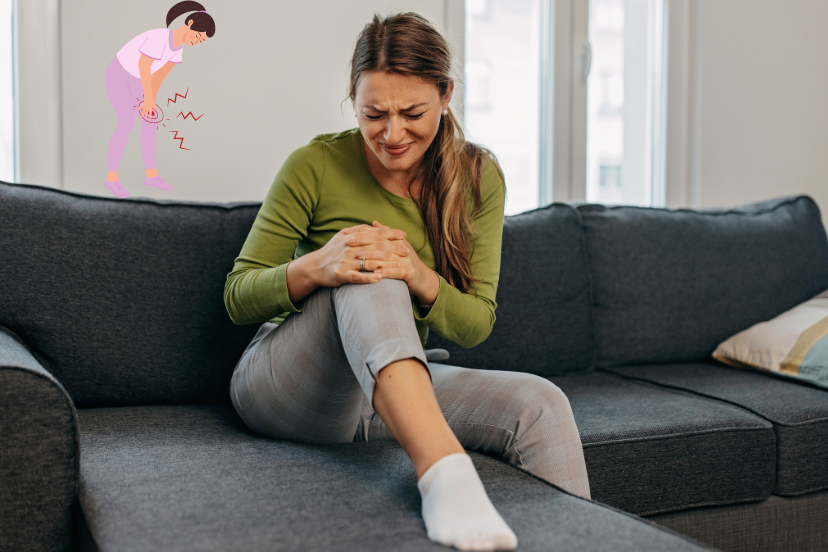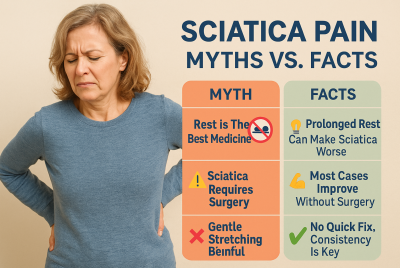Sciatic Nerve Pain in the Knee
Understanding Sciatic Nerve Pain in the Knee – Causes, Symptoms, and Solutions
Discover the causes, symptoms, and effective treatments for sciatic nerve pain in the knee. Learn how to find relief and prevent future pain! Sciatic nerve pain is often associated with discomfort in the lower back, buttocks, or legs. But did you know that sciatica can also manifest as pain in your knee? As someone who’s been through it and guided others through similar pain, I can assure you that knee pain linked to sciatica can be confusing, frustrating, and limiting. However, understanding what’s going on can help you find relief more effectively.
What is Sciatica?
A Brief Overview
Sciatica refers to pain that travels along the path of the sciatic nerve, which runs from your lower back through your hips and buttocks down each leg. It’s typically caused by irritation, inflammation, or compression of this nerve, often due to a herniated disk, bone spur, or spinal stenosis.
The Sciatic Nerve and Its Pathway
The sciatic nerve is the longest nerve in the body. It branches from the lower spine, weaving through the hips and glutes and down the back of the legs. Because of its long path, irritation in any part of this nerve can cause symptoms throughout its course, including the knee.
Can Sciatica Cause Knee Pain?
How Sciatic Nerve Pain Travels to the Knee
While sciatica is typically felt in the lower back or legs, it can cause knee pain as well. This happens because the nerve compression or irritation in the lower spine can send pain signals that radiate down to the knee. The referred pain may feel sharp, burning, or even like an electric shock.
Key Differences Between Knee Pain and Sciatica
It’s crucial to distinguish between true knee pain and knee pain caused by sciatica. Sciatic knee pain is usually associated with other symptoms, such as tingling, numbness, or weakness in the leg, while localized knee pain is often due to injury, arthritis, or strain.
Symptoms of Sciatic Nerve Pain in the Knee
Common Signs of Sciatica in the Knee Area
If your knee pain is linked to sciatica, you might experience sharp or burning pain that travels from the lower back to the knee. You may also notice weakness in your leg, making it difficult to stand or walk for long periods.
How to Differentiate Between Sciatica and Localized Knee Pain
One way to tell if your knee pain is related to sciatica is if it worsens after sitting for long periods or when you bend at the waist. Also, if your knee pain is accompanied by lower back discomfort, there’s a strong chance it’s linked to your sciatic nerve.
Why Does Sciatica Affect the Knee?
The Role of the Lumbar Spine
The sciatic nerve starts in the lumbar region of the spine. Any damage or inflammation in this area can lead to nerve compression, which can cause pain that radiates down to the knee.
Nerve Compression and Its Impact on the Knee
When the sciatic nerve gets compressed, the pain doesn’t just stay confined to the back. It can shoot down to the knee, making it feel sore, stiff, or even unstable. This is why many sciatica patients report knee pain as a major symptom.
Home Remedies to Relieve Sciatic Nerve Pain in the Knee
The Importance of Stretching and Strengthening
Stretching your hamstrings, lower back, and hip muscles can alleviate pressure on the sciatic nerve. Strengthening exercises, like those targeting the core, can also stabilize your spine and reduce nerve irritation. Try gentle yoga poses or pelvic tilts to get started.
Heat and Cold Therapy for Knee Pain Relief
Using heat or cold packs can provide temporary relief. Cold therapy reduces inflammation and numbs sharp pain, while heat therapy relaxes tense muscles and increases blood flow to the area, promoting healing.
When to See a Doctor
Recognizing Severe Symptoms
If your knee pain is intense, persistent, or associated with severe weakness in your leg, it’s time to consult a healthcare professional. These symptoms might indicate a more serious underlying condition that requires medical intervention.
When Home Treatments Aren’t Enough
Sometimes, despite your best efforts, home remedies aren’t sufficient. If your pain worsens over time or starts affecting your daily activities, a doctor might recommend physical therapy, medications, or even surgery, depending on the severity of your condition.
Sciatic Nerve Pain and Physical Therapy
Exercises to Strengthen the Core and Relieve Knee Pain
Physical therapists can guide you through exercises that target the muscles supporting your spine, such as your core and glutes. Strengthening these muscles can take the pressure off your sciatic nerve, offering long-term relief.
The Benefits of Professional Guidance
A physical therapist can create a customized plan tailored to your condition. They’ll ensure that you’re doing exercises correctly, reducing the risk of further injury and helping you recover more effectively.
Pain Management Options
Over-the-Counter Medications
Nonsteroidal anti-inflammatory drugs (NSAIDs) like ibuprofen or aspirin can help reduce pain and inflammation. While these aren’t a long-term solution, they can provide temporary relief when your pain flares up.
Natural Supplements for Nerve Pain
Certain supplements, such as turmeric, omega-3 fatty acids, or magnesium, can help reduce inflammation and support nerve health. Always consult with a doctor before starting any new supplement.
The Connection Between Posture and Sciatic Nerve Pain
How Poor Posture Aggravates Sciatica
Slouching or sitting for long periods can increase pressure on your lower back, which may exacerbate sciatic nerve pain. Even seemingly small adjustments to your posture can make a significant difference.
Simple Changes to Improve Your Posture
When sitting, keep your back straight, shoulders relaxed, and feet flat on the ground. If you work at a desk, consider using an ergonomic chair or a standing desk to help maintain proper alignment.
Preventing Future Sciatic Knee Pain
Staying Active
Regular exercise strengthens your muscles, improves flexibility, and reduces the risk of nerve compression. Walking, swimming, or cycling can keep you active without putting too much strain on your body.
Ergonomic Tips for Your Daily Routine
Use supportive footwear, avoid sitting for too long, and make sure your workspace is set up to support good posture. These small changes can prevent future sciatic flare-ups and keep knee pain at bay.
FAQs Related to Sciatic Nerve Pain in the Knee
Can sciatica cause knee pain without back pain?
While it’s less common, some people may experience knee pain due to sciatica without significant lower back pain.
How long does sciatic knee pain last?
It varies depending on the cause and treatment. Some people find relief within weeks, while others may experience chronic pain without proper intervention.
Can sciatica affect both knees?
While sciatica typically affects one side of the body, if both sides of the nerve are irritated, it can cause pain in both knees in rare cases.
Is sciatic nerve pain in the knee dangerous?
Sciatic knee pain isn’t usually dangerous, but severe symptoms, such as loss of mobility or strength, may indicate a more serious issue requiring medical attention.
Will losing weight help reduce sciatic knee pain?
Yes, losing weight can reduce the pressure on your spine and sciatic nerve, helping to alleviate knee pain associated with sciatica.
What are the best exercises for sciatic knee pain relief?
Gentle stretches like hamstring stretches, pelvic tilts, and lower back stretches can help. Strengthening exercises targeting the core are also beneficial.
Conclusion: Taking Control of Your Sciatic Knee Pain
Sciatic nerve pain in the knee can be frustrating, but by understanding its causes and symptoms, you can take steps to manage and relieve the pain. Whether it’s through stretching, improving your posture, or seeking medical advice when needed, there are many ways to address this issue. You don’t have to live with sciatic knee pain—take control of your health and find relief.
Disclaimer
Please note that this article should not replace professional medical advice. Consult a healthcare professional for an accurate diagnosis and tailored treatment plan.






